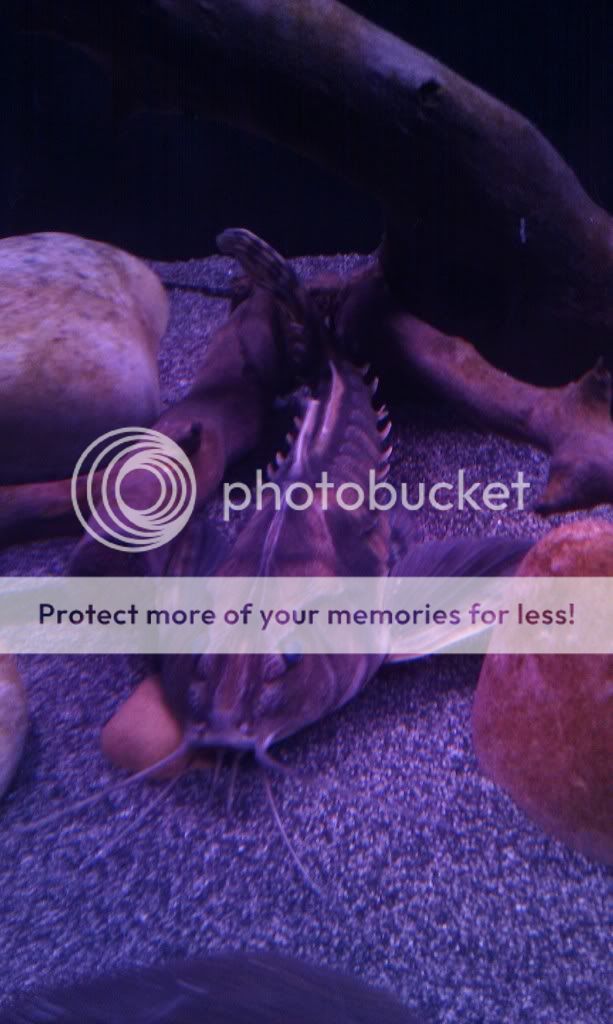COMMON NAMES - Giant talking catfish, Irwini catfish
SCIENTIFIC NAME - Megalodoras Uranoscopus, formerly known as Megalodoras Irwini
FAMILY - Doradidae
ORIGIN - South America, Amazon basin
MAXIMUN SIZE - Reported to be about 27 inches
CARE - Due to its potential size they will require a big tank in time, they arent the fastest growing fish so a huge tank isnt needed straight away. They do like to hide away so a decent sized cave is essential. Mine has been kept in water of pH 7.6 with no issues and at 26 degrees C
FEEDING - They will eat the full range of food thats offered meaty treats and sinking pellets are favourites but they will eat peas and mine comes to the surface when hungry to eat the floating pellets, they are not fussy eaters.
SEXING AND BREEDING - Both sexes look the same and can only be identified by looking at the genitalia underneath. As far as im aware they have not been bred in the home aquarium but i may be wrong. Normally ones offered for sale are wild caught.
OTHER - As all catfish they are predatory and smaller tank mates like tetras etc will be eaten. These fish look a nasty piece of kit with their spikes and armour but are a very gentle fish and do not harm or disturb other tank mates that wont be seen as food so make a great catfish for a big community tank. They are quite a slow growing fish but keep their colour as they age unlike some fish that lose their juvinile colours as they grow.


SCIENTIFIC NAME - Megalodoras Uranoscopus, formerly known as Megalodoras Irwini
FAMILY - Doradidae
ORIGIN - South America, Amazon basin
MAXIMUN SIZE - Reported to be about 27 inches
CARE - Due to its potential size they will require a big tank in time, they arent the fastest growing fish so a huge tank isnt needed straight away. They do like to hide away so a decent sized cave is essential. Mine has been kept in water of pH 7.6 with no issues and at 26 degrees C
FEEDING - They will eat the full range of food thats offered meaty treats and sinking pellets are favourites but they will eat peas and mine comes to the surface when hungry to eat the floating pellets, they are not fussy eaters.
SEXING AND BREEDING - Both sexes look the same and can only be identified by looking at the genitalia underneath. As far as im aware they have not been bred in the home aquarium but i may be wrong. Normally ones offered for sale are wild caught.
OTHER - As all catfish they are predatory and smaller tank mates like tetras etc will be eaten. These fish look a nasty piece of kit with their spikes and armour but are a very gentle fish and do not harm or disturb other tank mates that wont be seen as food so make a great catfish for a big community tank. They are quite a slow growing fish but keep their colour as they age unlike some fish that lose their juvinile colours as they grow.









